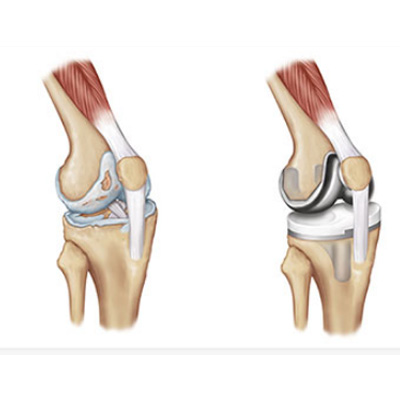
The knee is the largest joint in the body and having healthy knees is required to perform most everyday activities.
The knee is made up of the lower end of the thighbone (femur), the upper end of the shinbone (tibia), and the kneecap (patella).
The ends of these three bones are covered with articular cartilage, a smooth substance that protects the bones and enables them to move easily within the joint. The menisci are located between the femur and tibia. These C-shaped wedges act as shock absorbers that cushion the joint.Large ligaments hold the femur and tibia together and provide stability. The long thigh muscles give the knee strength.
All remaining surfaces of the knee are covered by a thin lining called the synovial membrane. This membrane releases a fluid that lubricates the cartilage, reducing friction to nearly zero in a healthy knee.Normally, all of these components work in harmony. But disease or injury can disrupt this harmony, resulting in pain, muscle weakness, and reduced function.
The most common cause of chronic knee pain and disability is arthritis. Although there are many types of arthritis, most knee pain is caused by just three types: osteoarthritis, rheumatoid arthritis, and posttraumatic arthritis.
knee surgical procedure helps doctors to view the interior of the knee joint through small incisions (cuts) via the skin and other soft tissues to treat knee problems.
During the procedure, the surgeon inserts a thin tube called an arthroscope into the knee joint through a small incision.
the surgeon fills the joint with sterile fluid to widen and get a good view of the joint. Once the view is clear, the surgeon diagnoses the problem and decides on the type of surgery required, if any. If surgery is needed, the surgeon will insert special miniature surgical instruments through small incisions called portals to treat the problem. The incisions made are tiny compared to the large incisions required for open surgery.
